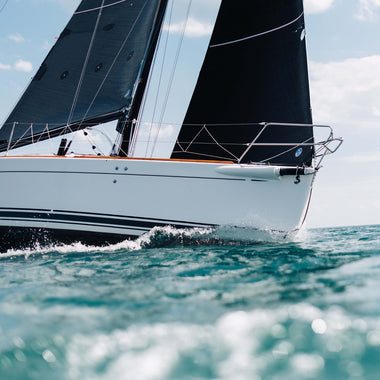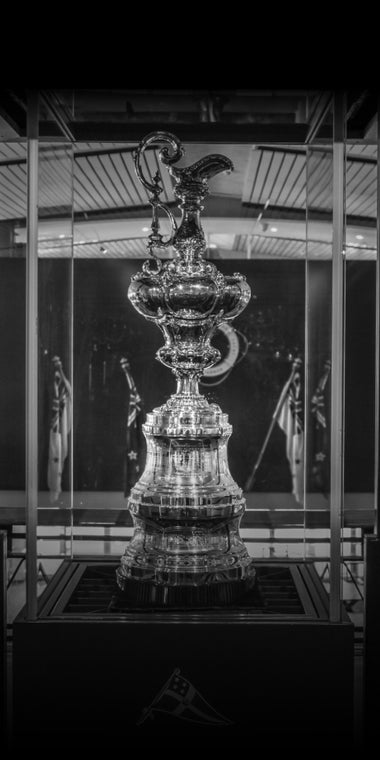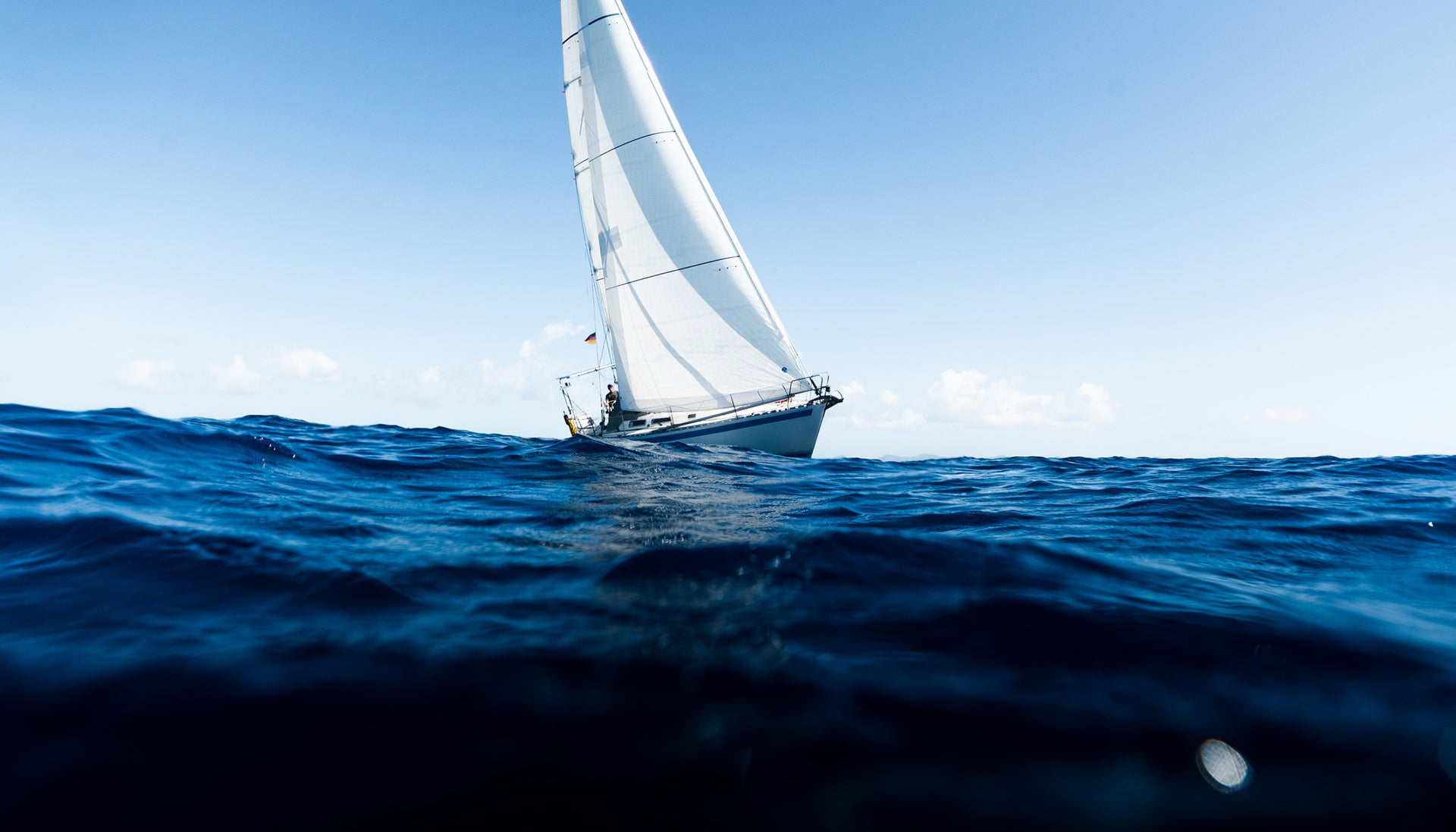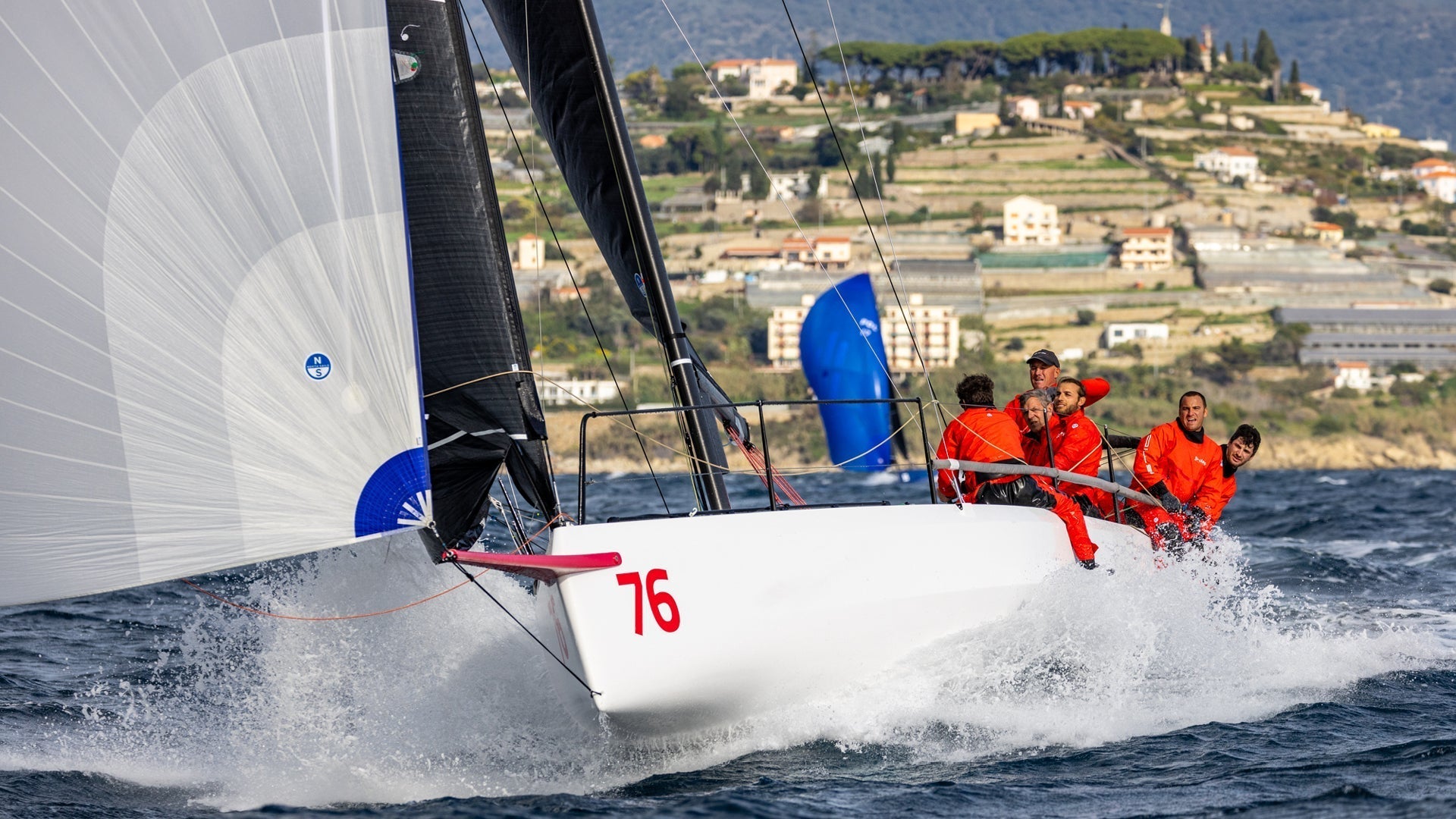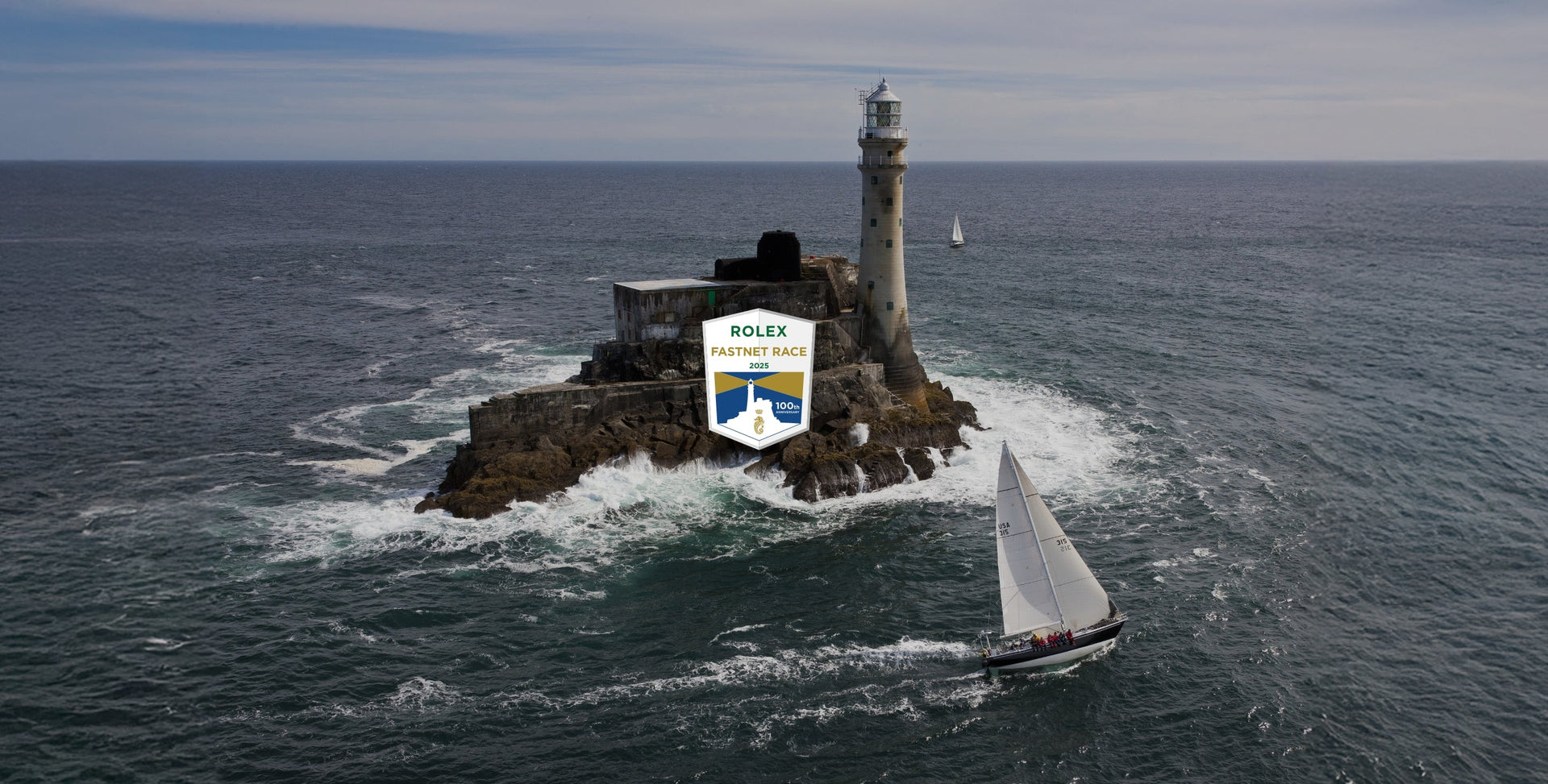CREATING A STARTING PROCEDURE
CREATING A STARTING PROCEDURE
How To Use A Conservative Starting Routine To Eliminate Big Scores
 When you look at the best teams in sailing, a common trend is how regimented and organized they are at a regatta. They show up each day well ahead of time and generally follow the same pre-race routine, the same on the water warm-up, and meticulously mark settings and take notes about each day's races and lessons learned. This is done to eliminate as many variables as possible to give themselves the best chance of winning the event. Creating team procedures and schedules can drastically reduce mistakes and allow the team members to maintain a more relaxed and procedural mindset on the water.
A common misconception is that starting has to be this chaotic event at the beginning of each race that is won with instinct and improvisation. Starting can actually be treated very routinely with a few steps that can land front row starts the majority of the time. When I sail with someone who is having a tough time finding a consistent start, we break it down into a step by step, conservative method to get off the line and head to the correct side.
When you look at the best teams in sailing, a common trend is how regimented and organized they are at a regatta. They show up each day well ahead of time and generally follow the same pre-race routine, the same on the water warm-up, and meticulously mark settings and take notes about each day's races and lessons learned. This is done to eliminate as many variables as possible to give themselves the best chance of winning the event. Creating team procedures and schedules can drastically reduce mistakes and allow the team members to maintain a more relaxed and procedural mindset on the water.
A common misconception is that starting has to be this chaotic event at the beginning of each race that is won with instinct and improvisation. Starting can actually be treated very routinely with a few steps that can land front row starts the majority of the time. When I sail with someone who is having a tough time finding a consistent start, we break it down into a step by step, conservative method to get off the line and head to the correct side.
Pre-Start Plan
Before the sequence even begins, I go through the starting plan with the skipper to make sure that we are both on the same page with how the start should go. In this time we work through pinging the line, a wind shot, and a proper back down to clear the foils. We then identify which third of the line we want to start in (pin third, middle third, boat third). As the skipper gets more comfortable with the routine we might get closer to each end, but to just get in good starting habits we try to keep it as simple and as low density as possible. It is also important to clearly establish the terminology that will be used on the starting line. Using terms like “copy” and “understood” help keep tensions down when trying to determine whether crew members are hearing communications.
 If you are in a starting rut, keep it to the low density areas away from the ends. As you get more comfortable you can start closer to the ends if the situation calls for it.
If you are in a starting rut, keep it to the low density areas away from the ends. As you get more comfortable you can start closer to the ends if the situation calls for it.The Circle
Harping back to keeping it simple I get the skipper immediately into the circle that the majority of the fleet ends up in during the pre start sailing on starboard towards the pin and the gybing and heading on port towards the boat. At first, it is always a gybe at the pin and a tack at the boat side. If you are in a class where you are allowed an instrument that gives you distance to the line, I will also give the target distance in which we want to be sailing. The more data driven I can be with these directions, the easier it is to be on the same page as the skipper.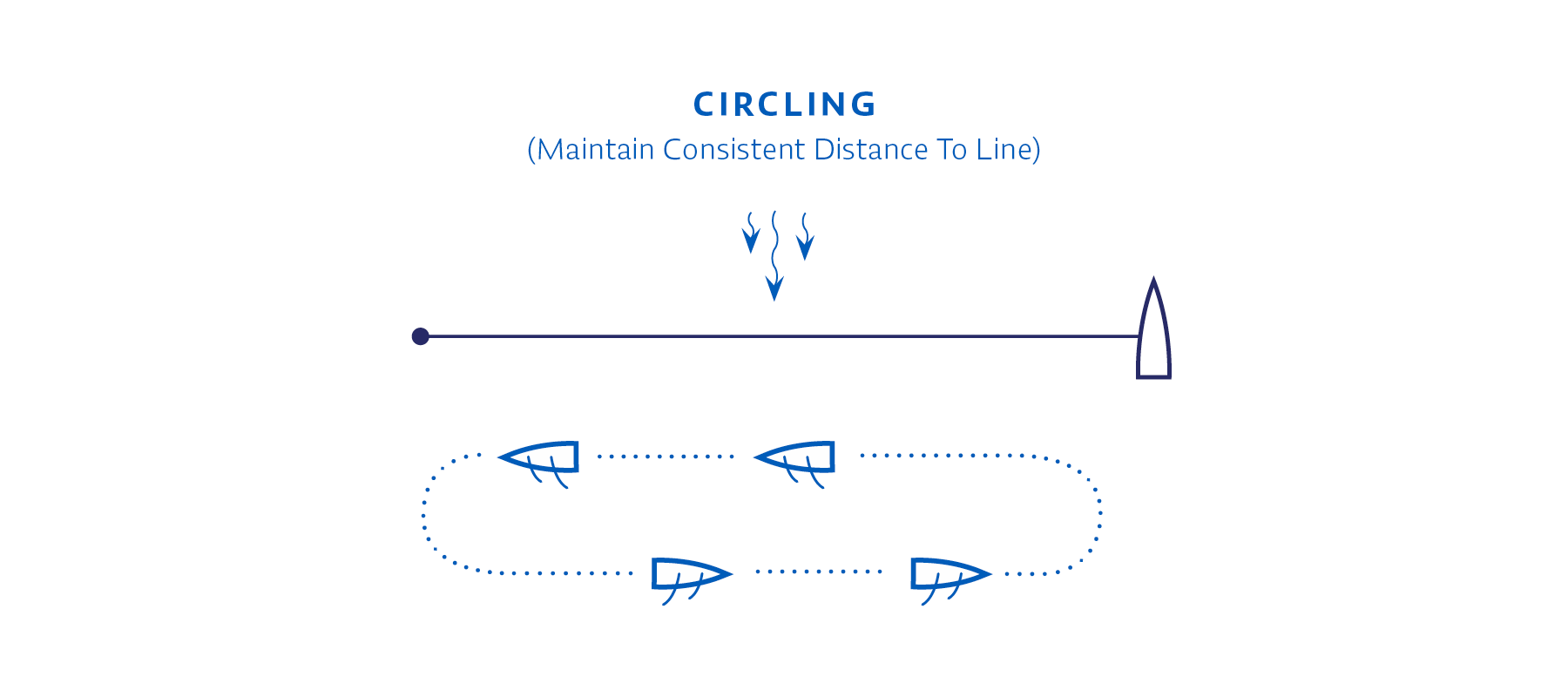 The distance from the line you want to be circling is very boat and condition dependent. The most important is to communicate the target depth to keep the entire crew on the same page.
The distance from the line you want to be circling is very boat and condition dependent. The most important is to communicate the target depth to keep the entire crew on the same page.Port Tack Approach
When it is time to head back on port for the final approach towards our intended hole, I will give a time to turn back and a final depth in the box number. Generally the windier it is, the deeper in the box we will be because we will eat up distance quicker in the breeze. If we are trying to start in the boat third, the turn back time will be sooner than if we are shooting for a middle or pin third start. For example we might turn back at 1:45 for the boat, 1:30 for the middle and 1:15 for a pin third start. As we prepare to tack into a hole, I will identify which boat that we will tack underneath in advance. If you are in a starting rut, keep it to the low density areas away from the ends. As you get more comfortable you can start closer to the ends if the situation calls for it.
If you are in a starting rut, keep it to the low density areas away from the ends. As you get more comfortable you can start closer to the ends if the situation calls for it.Tacking into the Hole
The target of this tack is to get as close as we can to the windward boat and to generally keep at least a quarter of the bow out ahead of the windward boat. I will generally talk through the tack about exit angle weather we want to be tight to the wind or on a general close hauled course. After the tack we need to immediately be looking for boats trying to do the same to us. Generally the best defense when a boat comes into leeward is to show your bow down parallel with the line for a brief moment to force the leeward boat to tack early and then turn back up. With this maneuver you will at least have one boat length of space to leeward. From this moment it is important to not let any boats come from your weather side and hook you to leeward. Crew communication here is key to have someone keeping an eye behind. Tacking tight to the boat to the windward side is paramount. Staying high out of the tack helps kill speed and maintain height inside of your hole.
Tacking tight to the boat to the windward side is paramount. Staying high out of the tack helps kill speed and maintain height inside of your hole.Approaching the Line
“
We are in our final approach, we have a nice hole to leeward, what now?” Once we have our hole, I relay to both the trimmers and driver the rate at which I want to approach the line. Remember, if the wind is shifted right you will use up distance to the line at a quicker rate than if you are in a left shifted breeze. The goal is to always be sailing toward the line on a close hauled course luffing when needing to control speed. Too many times boats that have to head onto a reach to stay below the line use up their hole to leeward and get pinched off soon after the start. Try to leave room to sail a close hauled course to the line. Try and avoid reaching right before the start as you lose your hole to leeward and can slip sideways on the turn up.
Try to leave room to sail a close hauled course to the line. Try and avoid reaching right before the start as you lose your hole to leeward and can slip sideways on the turn up.The Start
We hit the line with speed and in the front row, now it is time to work to stay punched out until the first shift. Final starting jobs include one member on the radio to listen for OCS boats, and one person giving relative speed and height to the immediate boats around off of the line. In putting your starting routine together, the main aspect to focus on is to identify the critical pieces of information that the particular helmsman is looking for. Finding conservative ways to be in the top group off of the line EVERY time and not just gambling at the ends is the priority. Following some of these steps will help eliminate the starts that cost major places over the duration of your next regatta. Crew starts calling relative speed and height immediately to try and maintain a clear lane.
Crew starts calling relative speed and height immediately to try and maintain a clear lane.